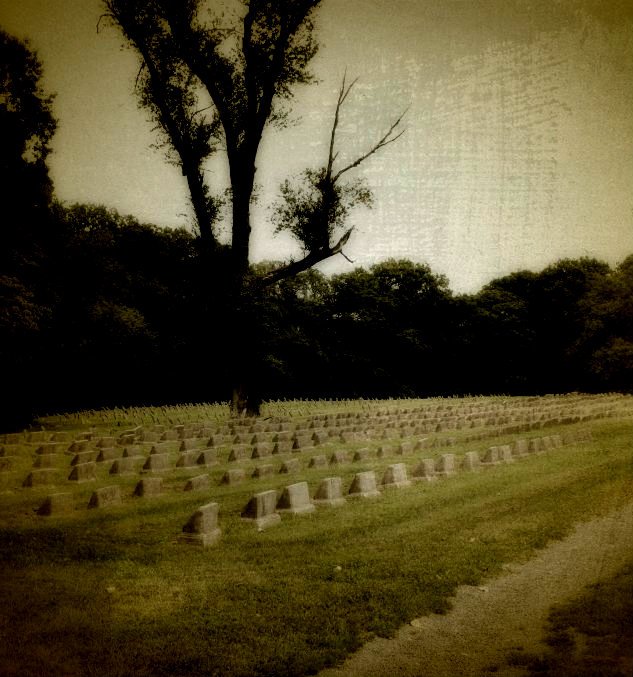AMERICAN HAUNTINGS GHOST HUNTS
NIGHT AT the peoria state hospital
cottage b1 and the asylum cemeteries
BARTONVILLE, ILLINOIS
SEE available dateS BELOW!
7:00 PM - 1:00 AM
$82 per person
APRIL 26, 2025: SOLD OUT!
JULY 26, 2025: CLICK HERE FOR RESERVATIONS!
Join American Hauntings as we explore the haunted confines of the infamous Peoria State Hospital in Bartonville, Illinois. Known for the restless spirits that have roamed this place for decades, we’re now taking you behind the locked doors of a NEW part of the hospital that has never been explored before!
THE HISTORY OF PEORIA STATE HOSPITAL
The main building of the Peoria State Insane Asylum was completed in 1902. Called the Bowen Building, it was used mainly as administrative offices for the asylum after the “cottage system” was put into place. Although this building is now gone — the history of the asylum lingers in the remaining cottages and in the eerie cemeteries once used for the burials of the unknown dead.
The Peoria State Hospital — then known as an asylum — was completed in 1902 under the direction of Dr. George A Zeller, a pioneer in the mental health field of the day. Prior to this time, mental health care barely existed. In those days, anyone suffering from a mental disorder was simply locked away from society in an asylum. Many of these hospitals were filthy places of confinement where patients were often left in straitjackets, locked in restraint chairs, or even placed in crates or cages if they were especially disturbed. Many of them spent every day in shackles and chains and even the so-called "treatments" were barbaric. Most mental patients spent their entire lives locked up inside of an asylum. Soon, though, men like Dr. Zeller began promoting the fact that the mentally ill could be helped, not just locked away and forgotten.
When the new state asylum opened, it was called the Peoria State Asylum, named for the closest large town. The hospital implemented what was called the "cottage system" and 33 different buildings were used to house patients. There was also a dorm for the nursing staff, a store, a power house and a domestic building with a laundry, bakery and kitchen.
Dr. George Zeller — a pioneer in Illinois’ mental health history
The asylum was eventually closed down in 1973 and many buildings were destroyed or sold at auction. Most of the buildings on the old hospital property have been torn down but those that remain are rumored to be haunted by spirits of the past.
Although numerous stories have been told about the hospital and grounds, the most popular is that of the death of one of the patients, a man known only as “A. Bookbinder.” Dr. Zeller assigned Bookbinder to the hospital’s burial corps, and he performed his job well — and even passionately mourned the passing of each and every person he helped intern in the cemetery.
When Bookbinder died, Dr. Zeller wrote that 400 of the staff and inmates saw his ghost mourning at his own funeral, just as he had for countless others while he was alive. They even opened the coffin to confirm that Old Book was really dead. His corpse was securely inside.
The strange story does not end there. The elm tree that Bookbinder had leaned against to cry and began to wither and die. Work crews attempted to remove it several times, but each time they were scared off by weeping that seemed to come from within the tree itself. Years later, the elm finally succumbed to nature when it fell over in a storm.
The cemetery — as well as the grave of A. Bookbinder — can be seen during your visit to the asylum grounds.
THE GHOST HUNT
The graves of the unknown dead in the asylum’s graveyards — home to the location’s most famous ghost story, “A. Bookbinder.”
The night will begin at the asylum museum, which was the original firehouse for the property. The building contains historical artifacts and personal belongings from both patients and staff — and perhaps a few of their ghosts, as well. Since the museum has been located in the building, there have been many reports of strange happenings, knocking, banging, whispers, and even a few full-blown apparitions.
Another location open to investigators is Cottage B1, which was part of the original “cottage system” that was designed by Dr. Zeller in the early days of the hospital. The previous owners of the cottage spotted full-bodied apparitions, heard voices, and saw radios turn to religious and country stations, and then increase in volume. More recent reports include voices, medicinal smells, laughter, and other strange noises.
There is no question that during the hospital’s many years of operation, hundreds died on the property and were buried in graves marked only by numbers. According to stories, research, and first-hand accounts, scores of their spirits stayed behind to walk the wards and hallways of the crumbling buildings and the asylum’s cemeteries and grounds.
Are you ready to spend the night searching for evidence of the ghosts that remain? Join American Hauntings at the Peoria State Hospital for a night that you won’t soon forget!



